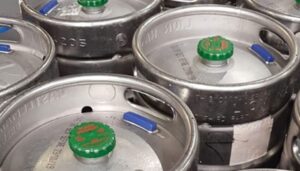If you want to improve your inventory management processes, you can install an RFID asset tracking system. This technology lets you track assets in real-time and collect valuable data.
 The first step is choosing the type of RFID tag to use. There are two main types: passive and active.
The first step is choosing the type of RFID tag to use. There are two main types: passive and active.
Real-time visibility
RFID technology enables real-time visibility of assets throughout the supply chain. This helps to ensure that product deliveries are made on time and without delay.
Asset tracking using RFID saves businesses money by preventing them from losing or misplacing inventory items. It also increases productivity as employees no longer must spend time searching for assets manually. For more information about RFID asset tracking, visit https://ramprfid.com/solutions/rfid-asset-tracking/ now!
The technology can also help improve manufacturing efficiency, reducing delays, and improving production flow. In addition, it can help to streamline the supply chain by enabling collaborative models such as vendor-managed inventory and continuous replenishment.
This is why many businesses are implementing RFID solutions to track their physical assets. It is a proven solution that can benefit organisations across all industries.
Increased security
Asset tracking can be a complex and time-consuming task for many businesses. In addition, manually entering data can be cumbersome and may lead to miscounts or internal theft, making RFID asset tracking an asset for your business.
With an RFID system, staff can quickly scan assets without having to locate the barcode or input the serial number manually. This saves a lot of time and improves your company’s overall efficiency.
Active RFID tags are the most advanced tag type, allowing longer read ranges than passive asset tags. They can also withstand higher temperatures and chemicals.
These tags contain a battery that powers their transmitter, but they’re more expensive than passive options and can run out quickly. These tags are ideal for high-value items or equipment subjected to heavy stress. For more information about RFID asset tracking, visit https://ramprfid.com/solutions/rfid-asset-tracking/ now!
Enhanced productivity
RFID asset tracking is an excellent solution for businesses that need to track and manage their assets. It automates the process, saving employees time to focus on more critical tasks.
It also eliminates the need for manual procedures that waste time searching for misplaced tools or equipment or counting inventory amounts. This allows staff to increase task speed and project turnover, reducing labour costs and improving overall facility productivity.
Having all your asset information in one place means you can quickly identify any issues and make timely repairs. This can also help prevent production delays.
Reduced costs
RFID tracking helps businesses avoid costly losses from equipment or goods going missing. It also reduces the risk of disruptions in supply chains.
Whether you’re transporting components for a production line or finished products to customers, RFID asset tracking gives you real-time data about where your assets are. This makes it easy to make decisions in a matter of seconds and reroute inventory in minutes.
This means you’ll be able to plan production more efficiently, which can help improve your bottom line. It can also save you money on inventory by keeping your items in stock or ensuring adequate supplies at every location.
The cost of an RFID asset tracking system can vary widely depending on the size and scope of your organisation. However, most systems can be implemented within a reasonable budget.
RFID Asset Tracking
RFID asset tracking is a process that allows businesses to track the movement of assets. This helps companies optimise their asset utilisation and improve overall operations.
Why you need an RFID system
The first step in implementing an RFID asset tracking system is to select tags and readers that suit your business’s needs. The type of tag you choose will depend on the frequency and amount of data your business needs to log, as well as how close or far away from the reader you want your tags to be able to transmit their signals.
Passive and semi-passive tags are the most common types of RFID tags used for asset tracking. These tags rely on the power emitted by a handheld reader to transmit their data.
On the other hand, active tags are powered by a battery and can transmit data at a much larger distance than passive or semi-passive tags. This makes them ideal for tracking equipment that is often moved and is not in direct line of sight. For more information about RFID asset tracking, visit https://ramprfid.com/solutions/rfid-asset-tracking/ now!